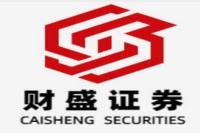China's Economic Outlook: Navigating Towards Sustainable Growth
Meta Description: China's economy is on the path to recovery, but challenges remain. This article dives deep into the latest economic indicators, policy strategies, and expert opinions, exploring the key factors influencing China's economic future.
A Resurgent Economy: Navigating the Course to Sustainable Growth
China's economic landscape is evolving rapidly, with recent data painting a picture of resilience and steady growth. The country's leadership has set ambitious goals for the coming years, aiming to achieve high-quality development and strengthen its position as a global economic powerhouse. While the road ahead presents opportunities, it also comes with unique challenges. This article delves into the key factors shaping China's economic trajectory, examining the trends, policies, and potential hurdles that will define its future. We'll explore the impact of government initiatives, technological advancements, and the evolving global economic landscape on China's journey towards sustainable and inclusive growth.
Key Economic Indicators & Trends
A Deep Dive into China's Economic Indicators
The Chinese economy is a complex and dynamic system, with a wide range of indicators providing insights into its performance. Here's a breakdown of some key metrics that shed light on the current state of play:
1. GDP Growth: China's GDP growth has rebounded in recent quarters, a testament to the effectiveness of government stimulus measures and the inherent resilience of its economy. While the initial post-pandemic recovery was driven by pent-up demand, the focus is now shifting towards sustainable, long-term growth.
2. Inflation: Inflation levels remain relatively low in China, indicating a stable consumer price environment. This stability is crucial for maintaining consumer confidence and encouraging investment.
3. Unemployment: The unemployment rate remains a key concern, particularly among young graduates. The government is actively addressing this challenge through various job creation programs and initiatives aimed at fostering entrepreneurship.
4. Trade: China's global trade volume continues to grow, reflecting its role as a major player in the global supply chain. However, the ongoing geopolitical tensions and trade disputes present challenges to maintaining consistent trade growth.
5. Investment: Investment remains a crucial driver of China's economic expansion. The government is actively promoting investment in infrastructure, technology, and green development projects, laying the foundation for sustained growth.
6. Consumer Spending: China's consumer spending is picking up, driven by factors such as rising disposable incomes and the reopening of the economy. The government is focusing on policies that encourage consumer confidence and boost domestic consumption.
7. Foreign Direct Investment (FDI): FDI remains a vital source of capital and technology for China. The government is implementing measures to attract more FDI, particularly in sectors aligned with its strategic goals.
8. Financial Markets: China's financial markets are becoming increasingly sophisticated and integrated with global markets. The government is taking steps to regulate the financial sector and promote a healthy and stable financial system.
Government Policies & Initiatives
Steering the Course: The Role of Government Policies
The Chinese government plays a central role in shaping the country's economic trajectory through a range of policies and initiatives. Here's a closer look at some of the key strategies:
1. Fiscal Policy: The government is using fiscal policies, including tax cuts and subsidies, to stimulate economic activity and support businesses. These measures aim to boost consumption, encourage investment, and create jobs.
2. Monetary Policy: The People's Bank of China (PBOC) is focusing on maintaining a stable monetary environment, with a focus on supporting businesses and promoting financial stability. The PBOC has been adjusting interest rates and liquidity to ensure an adequate supply of credit.
3. Structural Reforms: The government is implementing structural reforms to enhance the efficiency of the economy and promote high-quality development. These reforms include opening up key sectors to private investment, fostering innovation, and strengthening the social safety net.
4. Green Development: China has made significant strides towards green development, with a focus on renewable energy, energy efficiency, and environmental protection. The government is promoting green technologies and encouraging sustainable practices across various sectors.
5. Technological Advancement: China is actively investing in research and development, particularly in areas like artificial intelligence, robotics, and biotechnology. The government's "Made in China 2025" initiative aims to enhance domestic manufacturing capabilities and drive innovation.
6. Regional Development: The government is pursuing regional development strategies to promote balanced economic growth across the country. These strategies include investment in infrastructure, fostering innovation hubs, and supporting industries in less-developed areas.
Challenges & Opportunities
Navigating the Road Ahead: Challenges & Opportunities
Despite its impressive economic progress, China faces a number of challenges on its path to sustained growth:
1. Global Economic Uncertainty: The global economic outlook remains uncertain, with rising geopolitical tensions, inflation, and supply chain disruptions posing risks to China's growth prospects.
2. Domestic Structural Imbalances: China is grappling with structural imbalances, including high levels of debt, a widening income gap, and an aging population. Addressing these issues is crucial for long-term economic stability.
3. Technological Competition: China is facing intense competition from other countries in areas like artificial intelligence, semiconductors, and biotechnology. Maintaining its technological edge is essential for sustaining its economic competitiveness.
4. Environmental Sustainability: China's rapid economic growth has come at the cost of environmental degradation. Addressing environmental concerns and promoting sustainable development is crucial for long-term economic prosperity.
5. Social Inequality: Despite significant progress in reducing poverty, inequality remains a major concern in China. Addressing income disparities and promoting social equity is essential for ensuring social harmony and stability.
6. Financial Risks: China's financial system is facing challenges, including high levels of debt, shadow banking, and regulatory loopholes. Maintaining financial stability is crucial for preventing systemic risks.
Opportunities:
1. The Rise of Domestic Consumption: China's rising middle class is driving a surge in domestic consumption, presenting significant opportunities for businesses across various sectors.
2. Technological Innovation: China is at the forefront of technological innovation, with emerging industries like artificial intelligence, robotics, and biotechnology offering immense growth potential.
3. Green Development: The transition towards green development presents significant opportunities for China's businesses and investors, with a growing demand for renewable energy, energy efficiency, and sustainable technologies.
4. Regional Integration: China's regional integration initiatives, such as the Belt and Road Initiative, are opening up new trade and investment opportunities across Asia and beyond.
5. The Rise of the Digital Economy: China is a leader in the digital economy, with a rapidly growing e-commerce sector and a vibrant tech ecosystem.
Expert Insights & Analysis
Expert Perspectives on China's Economic Future
Leading economists and analysts offer diverse perspectives on China's economic trajectory:
1. A Focus on Sustainable Growth: Many experts believe that China's focus on high-quality development and sustainable growth is a positive step towards long-term economic prosperity.
2. The Importance of Innovation: Experts highlight the crucial role of technological innovation in maintaining China's economic competitiveness and achieving its long-term goals.
3. Addressing Structural Imbalances: Economists emphasize the need to address structural imbalances, such as high levels of debt and income inequality, to ensure economic stability.
4. The Impact of Global Uncertainty: Experts acknowledge the significant impact of global economic uncertainty on China's growth prospects, highlighting the need for agile policy responses.
5. The Importance of Reform: Analysts stress the importance of continued structural reforms to enhance efficiency, promote innovation, and foster a more open and competitive economy.
Keywords
Exploring the Key Terms
Here's a closer look at some of the key terms that will help you better understand China's economic landscape:
- High-quality Development: This refers to economic growth that is sustainable, inclusive, and environmentally friendly.
- Dual Circulation Strategy: This strategy aims to stimulate domestic consumption and drive economic growth through both domestic and international markets.
- Made in China 2025: This initiative aims to enhance domestic manufacturing capabilities and promote technological innovation in key sectors.
- Belt and Road Initiative: This ambitious infrastructure development project aims to connect China with other countries across Asia, Africa, and Europe, promoting trade and investment.
- Digital Economy: This refers to the economic activities that are enabled by digital technologies, such as e-commerce, online payments, and digital services.
FAQs
Answers to Common Questions
1. What are the main drivers of China's economic growth?
China's economic growth is driven by a combination of factors, including government investment, technological innovation, domestic consumption, and global trade.
2. What are the key challenges facing the Chinese economy?
China faces a number of challenges, including global economic uncertainty, domestic structural imbalances, technological competition, environmental sustainability, social inequality, and financial risks.
3. What are the government's key economic policies?
The Chinese government is implementing a range of policies, including fiscal and monetary measures, structural reforms, green development initiatives, and technological advancement strategies.
4. What are the opportunities for growth in China?
China offers significant opportunities for growth in sectors such as domestic consumption, technological innovation, green development, regional integration, and the digital economy.
5. What is the outlook for China's economy in the years to come?
The outlook for China's economy in the coming years is positive, with continued growth expected, driven by government policies, technological advancements, and the rising middle class. However, navigating global economic uncertainty and addressing structural challenges will be key to achieving sustainable and inclusive growth.
6. What should investors look out for in the Chinese economy?
Investors should pay close attention to key economic indicators, government policies, and technological advancements. They should also be aware of the potential risks and opportunities associated with the Chinese economy.
Conclusion
A Look Ahead: Navigating the Path to Sustainable Growth
China's economic landscape is in a state of flux, presenting both challenges and opportunities. The government's commitment to high-quality development, sustainable growth, and technological innovation sets the stage for continued progress. However, navigating global economic uncertainty, addressing structural imbalances, and fostering a more inclusive and equitable society will be crucial for achieving sustained economic prosperity. As China continues to evolve and adapt, its economic journey will be closely watched by the world, offering insights into the future of global development.



